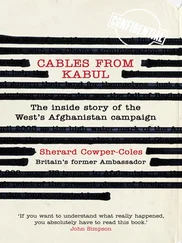Andrew Sorkin - Too Big to Fail - The Inside Story of How Wall Street and Washington Fought to Save the FinancialSystem--and Themselves
Здесь есть возможность читать онлайн «Andrew Sorkin - Too Big to Fail - The Inside Story of How Wall Street and Washington Fought to Save the FinancialSystem--and Themselves» весь текст электронной книги совершенно бесплатно (целиком полную версию без сокращений). В некоторых случаях можно слушать аудио, скачать через торрент в формате fb2 и присутствует краткое содержание. Жанр: Старинная литература, на английском языке. Описание произведения, (предисловие) а так же отзывы посетителей доступны на портале библиотеки ЛибКат.
- Название:Too Big to Fail: The Inside Story of How Wall Street and Washington Fought to Save the FinancialSystem--and Themselves
- Автор:
- Жанр:
- Год:неизвестен
- ISBN:нет данных
- Рейтинг книги:4 / 5. Голосов: 1
-
Избранное:Добавить в избранное
- Отзывы:
-
Ваша оценка:
- 80
- 1
- 2
- 3
- 4
- 5
Too Big to Fail: The Inside Story of How Wall Street and Washington Fought to Save the FinancialSystem--and Themselves: краткое содержание, описание и аннотация
Предлагаем к чтению аннотацию, описание, краткое содержание или предисловие (зависит от того, что написал сам автор книги «Too Big to Fail: The Inside Story of How Wall Street and Washington Fought to Save the FinancialSystem--and Themselves»). Если вы не нашли необходимую информацию о книге — напишите в комментариях, мы постараемся отыскать её.
Too Big to Fail: The Inside Story of How Wall Street and Washington Fought to Save the FinancialSystem--and Themselves — читать онлайн бесплатно полную книгу (весь текст) целиком
Ниже представлен текст книги, разбитый по страницам. Система сохранения места последней прочитанной страницы, позволяет с удобством читать онлайн бесплатно книгу «Too Big to Fail: The Inside Story of How Wall Street and Washington Fought to Save the FinancialSystem--and Themselves», без необходимости каждый раз заново искать на чём Вы остановились. Поставьте закладку, и сможете в любой момент перейти на страницу, на которой закончили чтение.
Интервал:
Закладка:
Paulson began as if it were a social call, knowing all too well that he was walking a fine line between acting as a regulator and a deal maker. Nonetheless, he quickly moved the discussion to the Lehman Brothers situation. “If you were to come in, your name alone would be very reassuring to the market,” he said, careful not to push his friend too far. At the same time, in his roundabout way, he made it clear that he wasn’t about to vouch for Lehman’s books—after all, for years Buffett had heard him, as a top executive at Goldman, rail against other firms he thought had been too aggressive in both their investments and their bookkeeping.
After years of friendship, Buffett was familiar with Paulson’s code: He was a hard-charging type, and if he wanted something badly enough, he would say so directly. He could tell now that Paulson wasn’t pressing too hard. The two promised to stay in touch and then bade good night.
Buffett returned to his examination of Lehman’s 10-K. Whenever he had a concern about a particular figure or issue, he noted the page number on the front of the report. Less than an hour into his reading, the cover of the report was filled with dozens of scribbled page citations. Here was an obvious red flag, for Buffett had a simple rule: He couldn’t invest in a firm about which he had so many questions, even if there were purported answers. He called it a night, resolved that he was unlikely to invest.
On Saturday morning, when Fuld called back, there quickly seemed to be a problem separate and apart from Buffett’s concerns. Fuld and Callan were under the impression that Buffett had asked for a 9 percent dividend and warrants “up 40”—meaning that the strike price of the warrants would be 40 percent more than their current value. Buffett, of course, thought he had articulated that the strike price of the warrants would be at $40 a share, just a couple dollars from where they were now. For a moment, they were all talking past one another as if they were Abbott and Costello performing “Who’s on First?” Clearly, there had been a miscommunication, and Buffett thought it was just as well. The talks ended.
Back at his desk in New York, an annoyed Fuld told Callan that he considered Buffett’s offer to be preposterously expensive and that they should seek investments from other investors.
By Monday morning, Fuld had managed to raise $4 billion of convertible preferred stock with a 7.25 percent interest rate and a 32 percent conversion premium from a group of big investment funds that already had a stake in Lehman. It was a much better deal for Lehman than what Buffett was offering, but it hardly came with the confidence an investment from him would have inspired.
Later that morning, Fuld called Buffett to inform him of the success of his fund-raising effort. Buffett congratulated him but privately wondered whether Fuld had used his name to help raise the money.
Although he never brought the subject up, Buffett found it curious that Fuld never mentioned what he imagined was an important piece of news that had crossed the tape over the weekend: “Lehman hit by $355 million fraud.” Lehman had been swindled out of $355 million by two employees at Marubeni Bank in Japan, who had apparently used forged documents and imposters to carry out their crimes.
Once again it reminded Buffett of his experience at Salomon—this time when John Gutfreund and Salomon’s legal team hadn’t told him that the firm was involved in a massive auction bid-rigging scandal of Treasury bills, a scandal that nearly took down the firm.
You just can’t trust people like that.
CHAPTER THREE
On the evening of Wednesday, April 2, 2008, an agitated Timothy F. Geithner took the escalator down to the main concourse of Washington’s Reagan National Airport. He had just arrived on the US Airways shuttle from New York, and his driver, who normally waited outside of security for him, was nowhere to be found.
“Where the fuck is he?” Geithner snapped at his chief aide, Calvin Mitchell, who had flown down with him.
Geithner, the youthful president of the New York Federal Reserve, seldom exhibited stress, but he was certainly feeling it at the moment. It had been less than three weeks since he had stitched together the last-second deal that pulled Bear Stearns back from the brink of insolvency, and tomorrow morning he would have to explain his actions, and himself, to the Senate Banking Committee—and to the world—for the very first time. Everything needed to go perfectly.
“Nobody’s picking up,” Mitchell moaned as he punched the buttons of his cell phone, trying to reach the driver.
The Federal Reserve usually sent a special secure car for Geithner, who by now had grown accustomed to living inside the bubble of the world’s largest bank. His life was planned down to the minute, which suited his punctual, fastidious, and highly programmed personality. He had flown to the capital the night before the hearing precisely out of concern that something like this—a hiccup with his driver—would happen.
On the flight down he had studied the script he had been tinkering with all week. There was one point he wanted to make absolutely clear, and he reviewed the relevant passage again and again. Bear Stearns, to his thinking, wasn’t just an isolated problem, as everyone seemed to be suggesting. As unpopular as it might be to state aloud, he intended to stress the fact that Bear Stearns—with its high leverage, virtually daily reliance on funding from others simply to stay in business, and interlocking trades with hundreds of other institutions—was a symptom of a much larger problem confronting the nation’s financial system.
“The most important risk is systemic: if this dynamic continues unabated, the result would be a greater probability of widespread insolvencies, severe and protracted damage to the financial system and, ultimately, to the economy as a whole,” he wrote. “This is not theoretical risk, and it is not something that the market can solve on its own.” He continued refining those ideas, using the tray table to take notes until just before the plane landed.
Over the course of the weekend of March 15, it had been Geithner—not his boss, Ben Bernanke, as the press had reported—who’d kept Bear from folding, constructing the $29 billion government backstop that finally persuaded a reluctant Jamie Dimon at JP Morgan to assume the firm’s obligations. The guarantee protected Bear’s debtholders and counterparties—the thousands of investors who traded with the firm—averting a crippling blow to the global financial system, at least that’s what Geithner planned to tell the senators.
Members of the Banking Committee wouldn’t necessarily see it that way and were likely to be skeptical, if not openly scornful, of Geithner at the hearing. They regarded the Bear deal as representative of a major and not necessarily welcome policy shift. He’d already been the target of stinging criticism, but given the scale of the intervention, it was only to be expected. That, however, didn’t make having to listen to politicians throw around the term “moral hazard” any less galling, as if they hadn’t just learned it the day before.
Unfortunately, it wasn’t just a chorus of the ignorant and the uninformed who had been critical of the deal. Even friends and colleagues, like former Fed chairman Paul Volcker, were comparing the Bear rescue unfavorably to the federal government’s infamous refusal to come to the assistance of a financially desperate New York City in the 1970s (enshrined in the classic New York Daily News headline: “Ford to City: Drop Dead”). The more knowing assessments ran along the following lines: The Federal Reserve had never before made such an enormous loan to the private sector. Why, exactly, had it been necessary to intervene in this case? After all, these weren’t innocent blue-collar workers on the line; they were highly paid bankers who had taken heedless risks. Had Geithner, and by extension the American people, been taken for suckers?
Читать дальшеИнтервал:
Закладка:
Похожие книги на «Too Big to Fail: The Inside Story of How Wall Street and Washington Fought to Save the FinancialSystem--and Themselves»
Представляем Вашему вниманию похожие книги на «Too Big to Fail: The Inside Story of How Wall Street and Washington Fought to Save the FinancialSystem--and Themselves» списком для выбора. Мы отобрали схожую по названию и смыслу литературу в надежде предоставить читателям больше вариантов отыскать новые, интересные, ещё непрочитанные произведения.
Обсуждение, отзывы о книге «Too Big to Fail: The Inside Story of How Wall Street and Washington Fought to Save the FinancialSystem--and Themselves» и просто собственные мнения читателей. Оставьте ваши комментарии, напишите, что Вы думаете о произведении, его смысле или главных героях. Укажите что конкретно понравилось, а что нет, и почему Вы так считаете.












